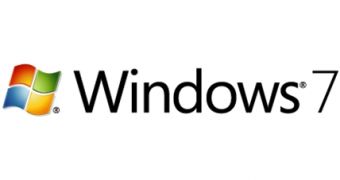When it was launching Windows Vista, one of the strong focuses for Microsoft was to get across the financial advantages of the operating system. The Redmond company is doing it again, this time with Windows 7, and the context could not be more adequate. Fact is that the global economic crisis provides fertile soil for an operating system capable of helping companies save money compared to the current platform deployed in their IT infrastructures. Without taking into consideration the costs associated with licensing Windows 7, Microsoft is promising that the manageability evolution of the operating system is capable of reducing Total Cost of Ownership.
“Windows 7 introduces a number of manageability improvements that can reduce total cost of ownership by helping to increase automation, improve user productivity, and provide flexible administrative control to meet compliance requirements,” Microsoft revealed. “IT professionals are often responsible for repetitive and time-consuming tasks. Windows 7’s comprehensive scripting abilities enhance the productivity of IT professionals by automating those tasks, which reduces errors while improving administrative efficiency.”
There are no less than 11 features in Windows 7 that will ultimately be synonymous with business customers cutting down TCO, according to Microsoft. The Redmond company has published the Windows 7 Manageability Overview whitepaper in an effort to present the features, as well as the manner in which they can contribute to slashing expenses. The promise from the software giant is that with Windows 7, while costs will go down, productivity will increase along with automation, manageability, and troubleshooting flexibility.
Here are the 11 Windows 7 features catalyzing a lower TCO, according to Microsoft:
1. Microsoft Windows PowerShell 2.0 enables IT professionals to easily create and run scripts on a local PC or on remote PCs across the network. Complex tasks or repetitive management and troubleshooting tasks are automated.
2. Group Policy scripting enables IT professionals to manage Group Policy Objects (GPOs) and registry-based settings in an automated manner, thus improving the efficiency and accuracy of GPO management.
3. Built-in Windows Troubleshooting Packs enable end-users to solve many common problems on their own, and IT professionals can create custom Troubleshooting Packs, thus extending this capability to internal applications.
4. Improvements to the System Restore tool inform users of applications that might be affected when returning Windows to an earlier state.
5.The new Problem Steps Recorder enables users to record screenshots, click-by-click, that reproduce a problem so IT can troubleshoot solutions.
6. Improvements to the Resource Monitor and Reliability Monitor enable IT professionals to more quickly diagnose performance, compatibility, and resource limitation problems.
7. AppLocker enables IT professionals to more flexibly set policy on which applications and scripts users can run or install, providing a more secure and manageable desktop.
8. Auditing improvements enable IT professionals to use Group Policy to configure more comprehensive auditing of files and registry access.
9. Administrators can require users to encrypt removable storage devices with BitLocker To Go via Group Policy.
10. Group Policy Preferences define the default configuration, which users can change, and provide centralized management of mapped network drives, scheduled tasks, and other Windows components that are not Group Policy-aware.
11. DirectAccess seamlessly connects mobile computers to the internal network, allowing IT professionals to manage them if the user has an Internet connection.

 14 DAY TRIAL //
14 DAY TRIAL //